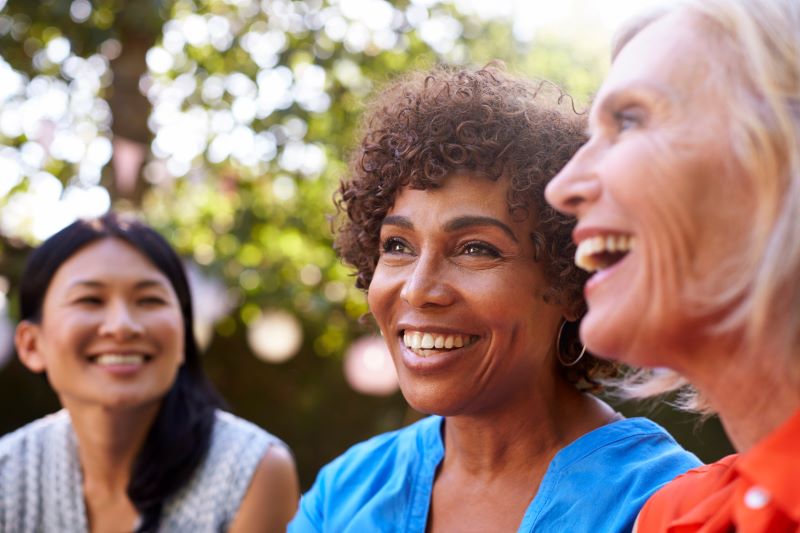
What Are the Different Types of Estrogen and How Do They Affect Your Sexual Health?

Estrogen is a hormone that plays a crucial role in the female reproductive system, but it also impacts other areas of health, including sexual function, bone density, and cardiovascular health. Understanding the different types of estrogen and how they affect your sexual health can help you better navigate changes in your body, especially as you age.
Types of Estrogen
There are four primary types of estrogen: estradiol, estriol, estrone, and estetrol. Each of these types serves different functions in the body and can have varying effects on sexual health.
- Estradiol (E2): Estradiol is the most potent form of estrogen and is the dominant type in women of reproductive age. It is produced mainly by the ovaries and is responsible for developing and maintaining the reproductive system, including the menstrual cycle and the preparation of the uterine lining for pregnancy. Estradiol also plays a significant role in maintaining vaginal health, contributing to the elasticity, lubrication, and thickness of the vaginal walls, which are essential for comfortable and pleasurable sexual activity.
Impact on Sexual Health: Adequate levels of estradiol are crucial for maintaining a healthy libido and sexual function. Low levels of estradiol, which can occur during menopause or due to certain medical conditions, can lead to vaginal dryness, thinning of the vaginal walls, urinary tract infections, and a decrease in sexual desire. These changes can make sexual activity uncomfortable or even painful, potentially leading to a decrease in sexual satisfaction.
- Estriol (E3): Estriol is the weakest of the four main types of estrogen and is primarily produced during pregnancy. It is synthesized in large amounts by the placenta and plays a vital role in supporting the pregnancy and preparing the body for childbirth. Outside of pregnancy, estriol levels are usually very low.
Impact on Sexual Health: While estriol does not have a significant impact on sexual health outside of pregnancy, it is sometimes used in low-dose vaginal creams to treat symptoms of menopause, such as vaginal dryness and irritation. These treatments can improve comfort during sexual activity for postmenopausal women.
- Estrone (E1): Estrone is the primary form of estrogen found in the body after menopause. Unlike estradiol, which is produced by the ovaries, estrone is produced in fat tissue. It is a weaker form of estrogen compared to estradiol but still plays a role in overall hormonal balance after the ovaries have reduced their estrogen production.
Impact on Sexual Health: Since estrone is weaker than estradiol, its ability to maintain vaginal health and sexual function is less robust. Postmenopausal women often experience a decline in estrone levels, which can contribute to the same symptoms of vaginal dryness, thinning of the vaginal walls, and decreased libido seen with low estradiol levels. Hormone replacement therapy (HRT) is often used to supplement estrogen levels and alleviate these symptoms, thereby improving sexual health and overall quality of life.
- Estetrol (E4): Estetrol is a newly recognized form of estrogen, produced during pregnancy by the fetal liver. It was first discovered in the 1960s, but only recently has its clinical relevance been explored. Unlike other forms of estrogen, estetrol is considered to be a “natural fetal estrogen,” and its effects on the body are still being studied. It has both estrogenic and anti-estrogenic properties, meaning it can activate or block estrogen receptors in different tissues.
Impact on Sexual Health: Estetrol is being explored for its potential use in HRT and as a component in contraceptive pills. It has shown promise in offering some of the benefits of estrogen without the associated risks, such as an increased risk of blood clots or breast cancer that is sometimes seen with other estrogens. Its exact impact on sexual health is still under investigation, but early research suggests that it may help alleviate symptoms of menopause, such as vaginal dryness and decreased libido, with fewer side effects than traditional hormone therapies.
The Role of Estrogen in Sexual Health
Estrogen is vital for maintaining a healthy and functioning reproductive system, and its levels can significantly impact sexual health. During the reproductive years, high levels of estradiol help to regulate the menstrual cycle, promote a healthy libido, and maintain vaginal health. However, as women age and enter menopause, estrogen levels decline, leading to various changes that can affect sexual function.
Low estrogen levels can result in decreased sexual desire, vaginal dryness, and discomfort during intercourse, all of which can impact a woman’s sexual satisfaction and overall well-being. Beyond this, low estrogen also affects bone density, increasing the risk of osteoporosis and fractures. Cognition can also be impacted, with lower estrogen levels being linked to difficulties in memory, focus, and a heightened risk of cognitive decline.
Additionally, estrogen helps regulate the cardiovascular system by promoting healthy blood vessel function and cholesterol levels, so a decline may contribute to an increased risk of cardiovascular issues. Since sexual activity involves the coordination of multiple bodily systems, including the cognitive, cardiovascular, and neurological systems, these broader health changes caused by low estrogen further influence sexual functioning.
Conclusion
Understanding the different types of estrogen and their impact on sexual health is important for managing changes in your body, especially as you age. Estradiol, estriol, estrone, and estetrol each play unique roles in the body, and maintaining a balance of these hormones is key to a healthy sexual life. If you experience changes in your sexual health, it’s necessary to consult with a healthcare provider to explore options that can help you maintain a fulfilling and comfortable sexual life.
References:
- The North American Menopause Society. (2022). The 2022 hormone therapy position statement of The North American Menopause Society. Menopause: The Journal of The North American Menopause Society, 29(7), 767-794. https://doi.org/10.1097/GME.0000000000002028
- Shifren, J. L., & Schiff, I. (2010). Role of hormone therapy in the management of menopause. Obstetrics and gynecology, 115(4), 839–855. https://doi.org/10.1097/AOG.0b013e3181d41191
- Simpson, E. R. (2003). Sources of estrogen and their importance. The Journal of Steroid Biochemistry and Molecular Biology, 86(3-5), 225-230. https://doi.org/10.1016/S0960-0760(03)00360-1



